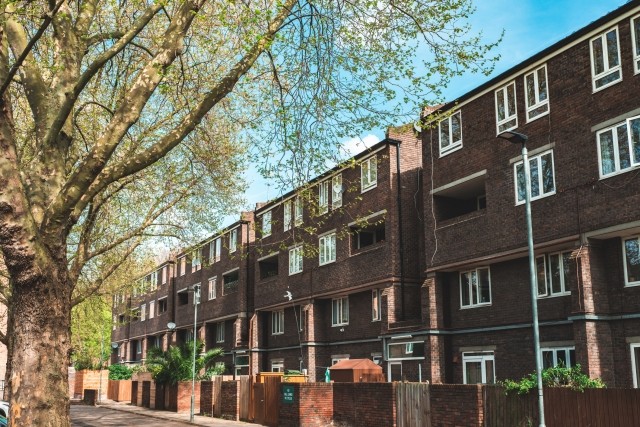Blog
Insurance for Non-Profits: The Crisis Within the Low-Income Housing Crisis
Homelessness in the United States has reached a critical point. A significant contributor? The lack of affordable housing. No state has an adequate supply of affordable rental housing for the lowest-income renters, as highlighted by a National Low Income Housing Coalition report. In fact, we're facing a national shortfall of 7.1 million affordable and available rental homes for this group.
Non-profits, alongside local municipalities and other organizations, are at the forefront of addressing this issue. The challenges they face are complex and varied. In this article, we’ll dive into a less frequently discussed obstacle: the insurance issues faced by non-profits working to provide low-income housing.

What’s Behind the Insurance Crisis?
The insurance market for low-income housing has hardened as carriers tighten coverage due to significant losses. Insurance carriers have limited their appetite on many lines of coverage for low-income housing due to reasons like tenant issues, quality of housing (such as mold concerns), litigation, and state consumer protection laws.
For properties with no losses, premiums have increased by 30%–40% (or even more in many cases), and deductibles are much higher. For example, we have seen water damage deductibles increase from $10,000 to $100,000.
Some insurers have even withdrawn from the market, reducing available options.
The Impact of Rising Insurance Costs on Non-Profits
Non-profit organizations managing low-income housing face growing financial strain. With rising insurance costs and higher deductibles at the time of a loss, these organizations are forced to make one of two choices:
- File a claim, risking premium hikes and renewal issues
- Pay out of pocket, further impacting their budgets
Both scenarios threaten the stability of these organizations and can negatively impact the funding they need to achieve their mission. Non-profits cannot increase their prices like for-profit businesses to cover added costs—a 50% insurance premium increase at renewal often means that much less is available for services to those in need.
Simple Steps to Reduce Risk
While the insurance markets are challenging for low-income housing, building owners and management can take steps to reduce the risk of a loss.
- Fire blankets: In addition to installing fire extinguishers in each unit and in common areas, we recommend the addition of fire blankets. Clean-up is costly when a fire extinguisher is used. If the fire is small, a fire blanket is a great option. Consider providing one for each unit.
- Humidity sensors: Humidity sensors measure the amount of moisture in the air within a building to optimize energy efficiency and prevent issues like mold growth or other damage due to excessive moisture. Some insurance carriers have sensor programs you can enroll in.
- Stovetop FireStops: These devices help put out dangerous and destructive kitchen fires.
- Tracking building improvements: Many building owners are unaware of when the roof was last replaced or when plumbing was updated in each building. Keeping updated records of improvements helps managers schedule maintenance and replacement of key systems when needed to avoid major losses.
- Building management/tenant relationships: Some tenants may not allow building management into their units when there could be a potential loss. Unfortunately, this can lead to heavier losses. For example, when a water loss is stopped immediately, the cost of damages and the number of units impacted are usually lower. To avoid issues accessing units, many non-profits emphasize maintaining positive relationships between building management and tenants. This leads tenants to have a level of trust to allow unit access when needed.
Not only are building owners and operators of low-income/affordable housing reducing the risk of loss by being proactive with the above recommendations, but they also make a building more appealing to underwriters when trying to place insurance coverage.
Ensuring Low-Income Housing Viability
Many states have conducted independent studies on the insurance crisis affecting low-income housing, yet little action has been taken. While rising homelessness across the US has garnered attention and funding, leaders must also address the insurance challenges non-profits face. Could grants be established to contribute to the cost of insurance, or alternate insurance programs with rates that are sustainable for non-profit budgets? Thinking outside of the box will be essential in providing long-term solutions for the hard insurance market's impact on non-profits.
As commercial insurance brokers specializing in non-profits, we are committed to advocating for affordable insurance solutions to ensure low-income housing remains viable. Reach out to your Woodruff Sawyer representative to discuss non-profit insurance and risk management strategies.
Author
Table of Contents













